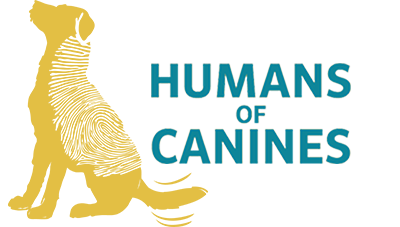An article by Atulya Gangaraju, Intern at Humans of Canines.

Understanding Art Therapy
According to American Art Therapy Association, “Art therapy is an integrative mental health and human services profession that enriches the lives of individuals, families, and communities through active art-making, creative process, applied psychological theory, and human experience within a psychotherapeutic relationship.” (AATA, 2017). Known to be one of the popular alternative forms of therapy, Art Therapy uses creative techniques such as drawing, painting, sculpting or other such mediums to enhance the ability of the individual to express themself and in turn analyse their deep-rooted emotions. Its preliminary aim is to work on self-healing and holistic well-being.
According to Dr Eshwari Vadlamudi, PhD, Certified Art Therapy Coach, Co-founder of Manomantra (www.manomantra.in) “Art Therapy is the ability to express inexpressible emotions.” It is a form of therapy that is to be practised only by a professional, certified Art Therapist and is known to be a way of understanding the non-verbal methods of expressing their inner emotions and feelings.
When do we use it?
According to AATA, “Art Therapy is used to improve cognitive and sensory-motor functions, foster self-esteem and self-awareness, cultivate emotional resilience, promote insight, enhance social skills, reduce and resolve conflicts and distress, and advance societal and ecological change.”
This alternative form of therapy be used with Children, Adolescents and even Adults of any age group and gender to work on:

How does it work?
Dr Eshwari says, “It helps in understanding our deeper emotions and expressing them in ways only we can understand. She goes on to explain, “When I sit with individuals, I take them to their happy place or to a place they wish to go to and ask them to draw how they feel with the medium they like, the colours they feel, and the shapes they think the environment will have. It can be anything from the beaches to the mountains to a dessert. They can have pink waters and yellow clouds if they want or just a simple abstract art with scribbles or lines.”
Similarities between Art Therapy and Animal Assisted Therapy
As we know, Animal Assisted Therapy (AAT) is based on the human-animal bond and uses that bond to help individuals get a better understanding of themselves. Art therapy also focuses on understanding certain similar aspects of life. These are:
• Calm the individuals with the release of endorphins
• Developing the willingness to participate in therapeutic activities
• Improving social interactions
• Focusing and maintaining calm in the environment and within oneself
• Improving concentration
• Understand outward and inward emotions and feelings
• Stabilises emotions
• Develop a sense of self-worth
Animal Assisted Therapy in collaboration with Art Therapy can work wonders with individuals of all age groups, especially children in improving their self-esteem, concentration, interactive skills, adjustment, a sense of calmness and happiness.
References:
• AATA. (2017). About Art Therapy. https://arttherapy.org/about-art-therapy/.
• Dr Eshwari Vadlamudi, PhD, Art Therapy Coach, Interview, 29.09.2020
• Google, Images
• MANOMANTRA. https://manomantra.in/.



